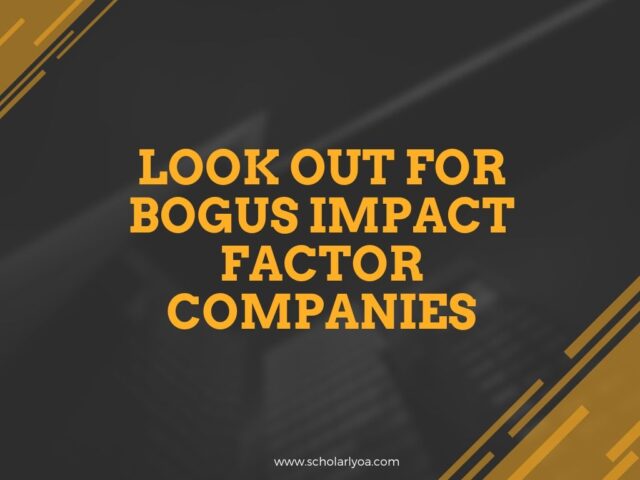
The proliferation of predatory open-access publishers has created several new and expanding markets. One of these is the market for journal rankings. Because few predatory publishers are able to earn legitimate journal rankings, companies have emerged that — for a fee — award bogus impact factors to low-quality journals.
Predatory publishers compete intensely among themselves for the article processing charges that authors pay. Authors are their customers, and they want to get as much money from them as possible. In this competitive market, publishers want to stand out from the crowd and attract the author fees. One way to effectively earn these fees is to boast high journal rankings. Many predatory publishers lie about having an impact factor, but this tactic is easily confirmed as fraudulent. These new companies will, for a fee, bestow a high and “official” impact factor on their clients’ journals. Here are three of the companies:
1. Journal Impact Factor (Global Institute for Scientific Information)
This bogus organization is an obvious appropriation of the former Institute for Scientific Information (ISI), which no longer exists. (Its journal impact factor was taken over by Thomson Reuters). I think this operation is based in India, but they provide no location information on their website, and their domain name information is blocked. This site uses a web form for submissions. It says, “At least 1 or 2 article [sic] must have been published in the first issue before you submit the journal in online or print.” It also warns, “We are charging nominal fee for processing your journal to get Journal Impact Factor.” This policy shows a clear conflict of interest.
2. Global Impact Factor (Institute for Information Resources)
This company provides an address in Australia, but I think it is really from India. It uses experts to make qualitative judgments about each journal, and that’s how the score is calculated. The website says the process takes 4-6 months, but a journal can pay $100 for a priority processing that takes 1-2 weeks. The services judges journals on things such as layout and technical editing, so it’s really not a measure of impact at all.
This website is new and enigmatic. It does not reveal its headquarters location and I cannot figure out where it’s based. The company claims that it does not charge for journal consideration. Its criteria are based on publishing quality, manuscript quality, presentation quality, and editorial quality — things that don’t relate to impact at all. I don’t understand the business model being employed here. Some parts of the webpage don’t work — including access to the “journal master lists,” which renders the site worthless.

This Poland-based service lists the “IC values” of many of 8,000 journals it tracks. I find it very suspicious. Indian publishers love to tout the IC values their journals have received. For the 2012 list, it appears that the journal “Archives of Budo” received the second highest score of any journal with an IC value of 19.58. Not surprisingly, this journal is from Poland.
Conclusion
I have noticed that among predatory journals that their bogus impact factors magically increase every year. The increasing popularity of ALMs — article level metrics — means that companies like the ones above will certainly be creating and selling bogus versions of these metrics as well. But because ALMs are measured at the article level, these will be marketed directly to authors, so they can increase the values for their published articles. The amount of corruption in scholarly publishing is increasing.









